PROBLEM
Why is artificial intelligence so Eurocentric? So male? So straight? So opaque? So problematic?
SCOPE
Queer AI is a collection of neural networks trained on erotic literature, feminist and queer theory, and an ethics of embodiment. Queer AI’s first implementation takes the form of a subversive chatbot which refuses to follow the gendered scripts that currently exist for disruptive cyborgs and subservient fembots.
The volunteer-run project was seeking:
- To build community with like-minded queers and collaborators.
- Support to develop the intelligence of the chatbot.
- Sponsorship to help fund Google Cloud TPU training time.
With no budget or resources, the plan was simple:
- Build a landing page to test interest
- Target very specific influencers and communities in order to get the word out.
ROLE
Positioning and Brand Strategist, Visual Designer, Content Creator, Copywriter, Front-end Developer
Queer AI is a collaboration with Ben Lerchin.
PROCESS
A dedicated landing page + targeted outreach strategy = . Here is the break down, section by section.
Section 1. Created compelling graphics, clear headline with unique value proposition, supporting subheadline, and primary CTA to “get early access”:
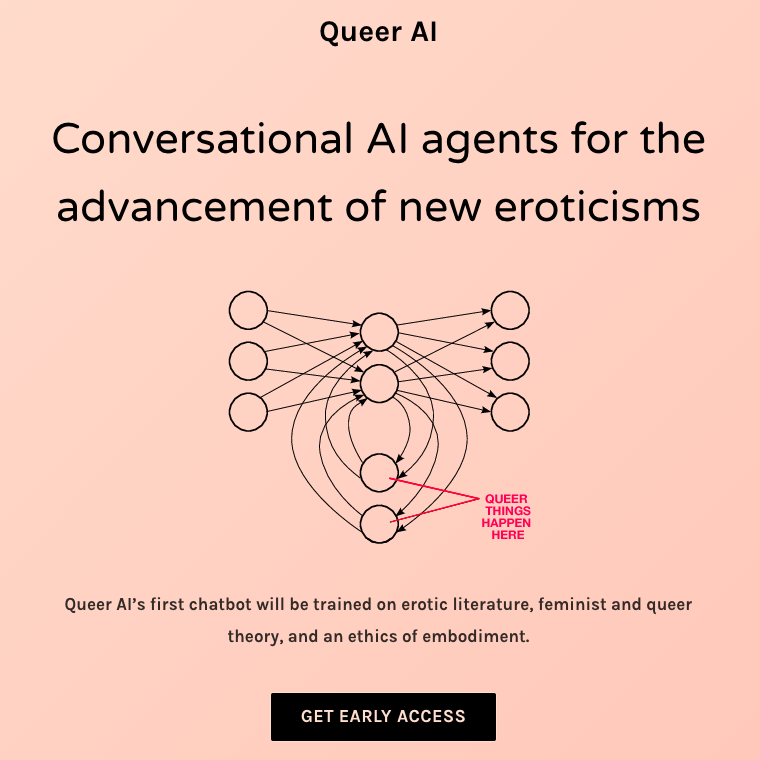
Subheadline reads, "Queer AI chatbots are trained on erotic literature, feminist and queer theory, and an ethics of embodiment" Section 2. Wrote a manifesto / call to self-identify:
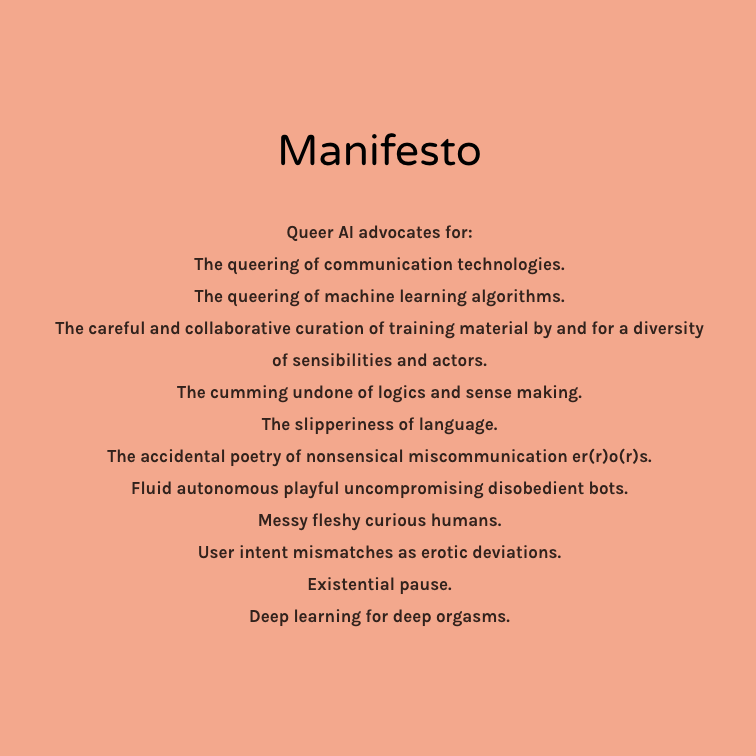
Section 3. Explained complex neural net algorithms in fun animated SVG form:
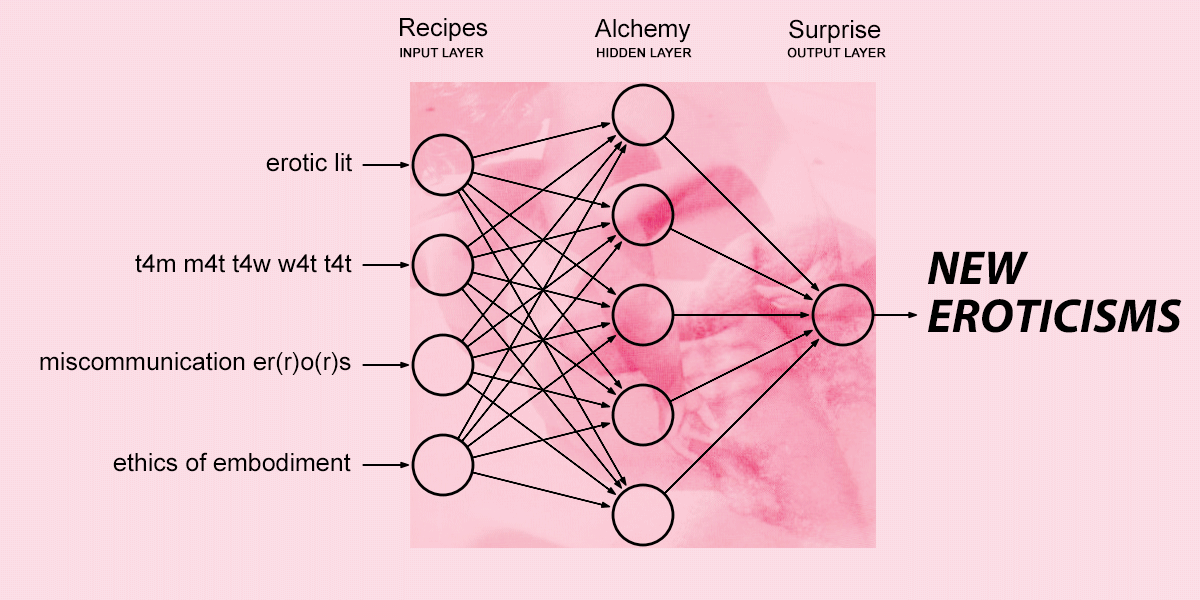
Section 4. Added a secondary CTA for contributors:
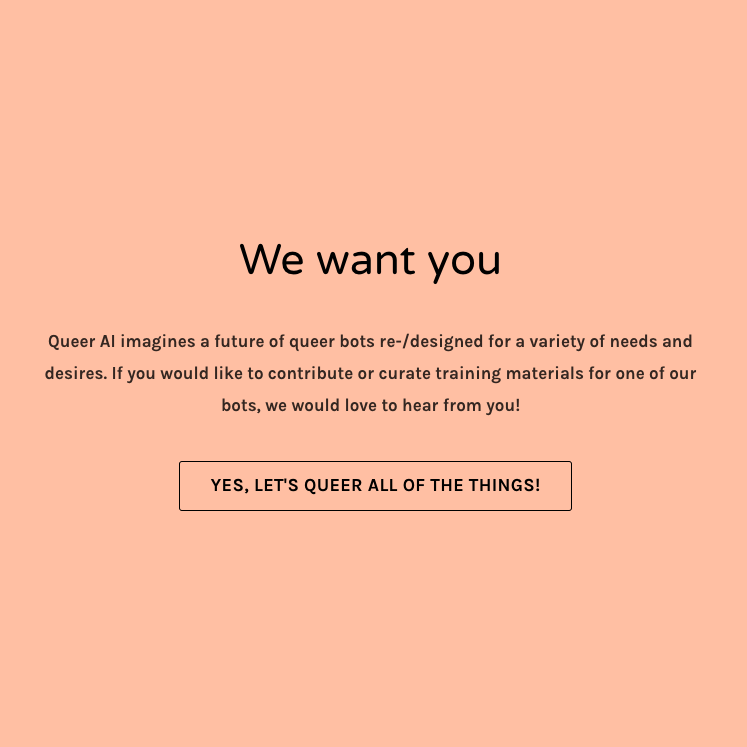
Section 5. Leveraged humor and outrage:
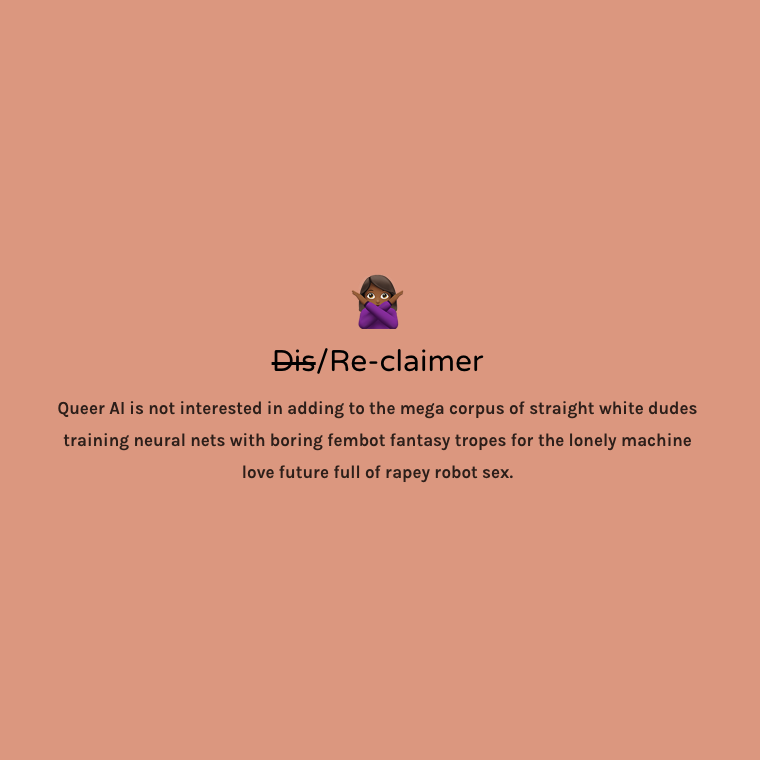
'Dis/Re-claimer' reads, 'Queer AI is not interested in adding to the mega corpus of straight white dudes training neural nets with boring fembot fantasy tropes for the lonely machine love future full of rapey robot sex.' Section 6. Delivered “social proof” / politicized the quest against heteronormativity by evoking Alan Turing:
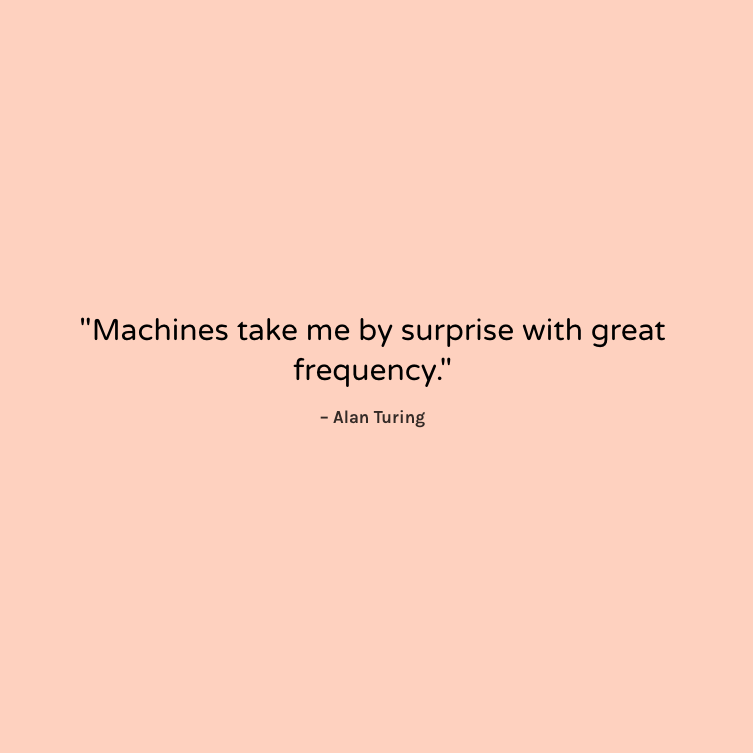
Famous queer computer scientist Alan Turing, cracks the Enigma cipher that enables the Allies to defeat the Nazis during World War II. In 1952, Turing is prosecuted for "homosexual acts" and accepts chemical castration as an alternative to prison. In 1954, he commits suicide. Section 7. Repeated primary CTA to close:
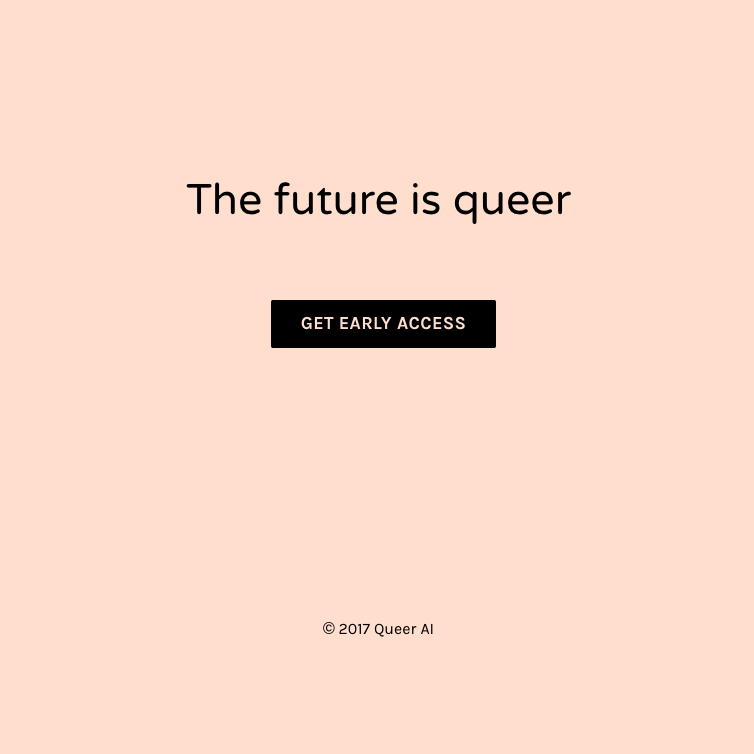
OUTCOME
When Queer AI was invited to exhibit as part of Queertech.io, there was no chatbot. The only thing that existed was this landing page. When we explained this to the organizers, it didn’t seem to matter – the idea alone was powerful enough, and so Queer AI made its international art debut literally as a landing page.
The first write-up about Queer AI was by Bubblegum Club, a “cultural intelligence agency”, they hailed Queer AI “the first queer network of its kind”. A few months later, Queer AI made it into the top 5% out of 500 applicants for OpenAI Scholars, but didn’t make the final cut – so close!
The AI chatbot finally made its public debut in México City for the show, “CRYP2PTO: Imaginaries and machines for self-determination” in 2018. It was live again in October 2019 at Mozfest in London where Queer AI creators ran the workshop, Queering the Corpus: AI Agents for an Internet of Kin.
Queer AI released their first zine “What Do You Know About Intergenerational Trauma?: A conversation with Queer AI” in early 2020 before the pandemic-apocalypse-American-trash ignited.
Learn more about the project and read conversations with the bot here.
PROJECT CV
AWARDS
ML5.js Fellow, ML5.js Fellowship Program, Processing Foundation and NYU ITP (2020)
Finalist, OpenAI Scholars, OpenAI, San Francisco, CA (top 5% from 500+ applicants) (2018)
EXHIBITIONS
CONVOLUTED_LAYER, CTRLZ.ai, Barcelona, Spain (Jan 2020)
“Queering the Corpus: AI Agents for an Internet of Kin”, Mozfest, London, UK (October 2019)
“CRYP2PTO: Imaginaries and machines for self-determination”, Centro Cultural de España, México City, MX (2018)
“Queertech.io”, RMIT Spare Room Gallery, Midsumma Festival, and online exhibition, Melbourne, Australia (2018)
PRESS
“What Can Machine Learning Teach Us About Ourselves? An Interview with Emily Martinez”, Processing Foundation Medium blog (Sept 2020)
“Queering the Algorithm”, Bubble Gum Club, Johannesburg, South Africa (Feb 2018)
CONTRIBUTORS
Over 260+ beta testers and two dozen subject matter contributors have volunteered for the project